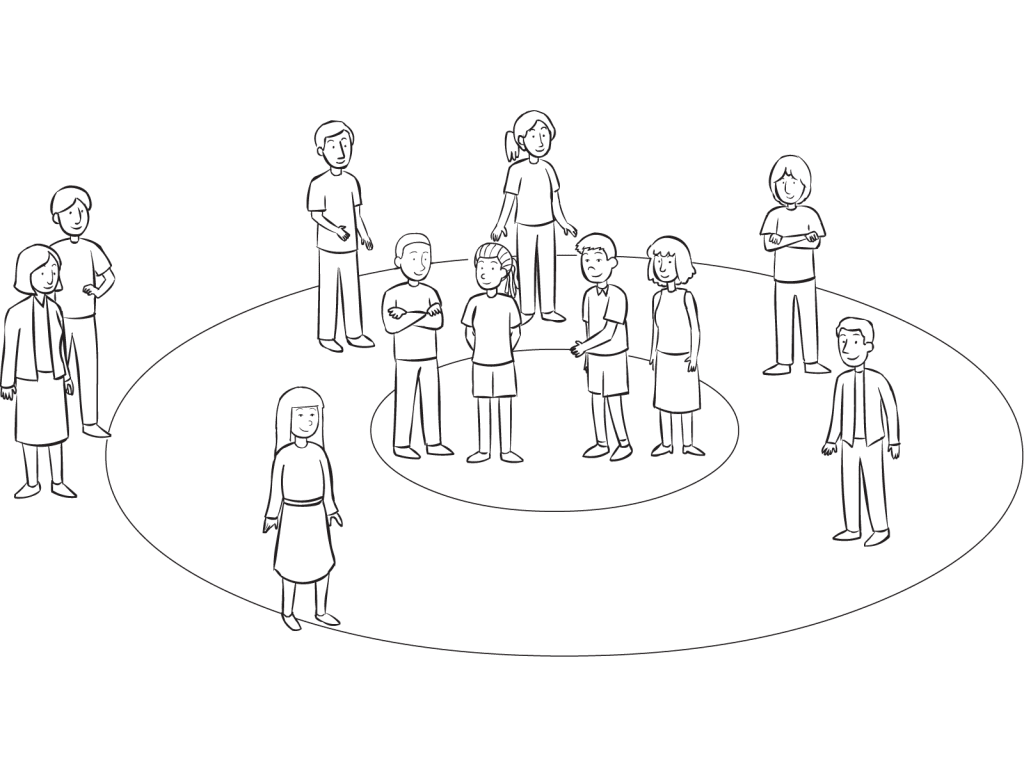
Comfort Zone Circles
Powerful front-loading exercise to explore skill development.
- Fun Challenge by Choice introduction
- Simple, rapid execution
- Non-threatening interaction
- Extremely meaningful
Save to Playlist
Step-by-Step Instructions
Resources Premium
Video Tutorial Premium
How To Play Narrative Premium
Practical Leadership Tips Premium
Social-Emotional Learning Premium
Health & Wellness Programming Premium
Popular Variations Premium
Virtual Adaptation Premium
You Might Also Like... Premium
Useful Framing Ideas Premium
Reflection Tips & Strategies Premium
Program Templates Premium
Source Premium

No Props No Problem
Brand NEW book featuring 150+ outrageously fun group games & activities. Scan QR codes to connect to tons of digital content including video tutorials.
Add to Cart
NEW – No Props No Problem
The best-selling book featuring 150+ outrageously fun group games & activities. Scan QR codes to access exclusive digital content including video tutorials.

Free Ice-Breakers & Group Games
Ten of the best no-prop, interactive ‘get-to-know-you’ games & activities. 100% fun, your group will love ’em. Our most successful giveaway, 10,000+ downloads so far…
Top Ten Icebreakers & Group Games
Download our free 28-page ebook jam-packed with outrageously fun activity ideas.
Just one more question:
I am interested in…
Choose a plan that’s right for you
We offer a range of membership plans with no surprises.
Click an option below & discover our simple pricing.

Individual
Click here if you’re a:
- Teacher
- Corporate trainer
- Outdoor educator
- Camp leader
- Youth leader
- Conference organiser
- Therapist/counsellor
Membership Plans

Enterprise
Click here if you represent a:
- School
- Corporation
- Community-based Organisation
Explore plans for
10, 50, 200 or more
potential users
Membership Plans





This is a great self discovery activity as well as getting to know the rest of the group activity.
Setting up the space to indicate that there is no right or wrong or judgement on what the individuals response is is very important. This will hopefully encourage honest self reflections and sharing depending on the group.
Again depending on the setup the information shared will be respected and used positively as well by all members of the group. If for example someone remembers that another participant was a bit nervous about something they learnt though the activity, they can then support that person or work more effectively.
As an educator or someone leading and learning about your students or groups, it is a powerful tool that could be used to get an insight into your students and help them grow.
It is also a nice way of showing that we are all different and also bridge gaps that may exist. Students may not see educators as people and this activity may reduce those barriers a little and help people connect more.
I often like to ask people to share a little on why they are standing where they are .. only if they are comfortable to do so.. not a justification but just to share a little more so as to increase the connections.. Great activity when used correctly and with a group that is ready for it.